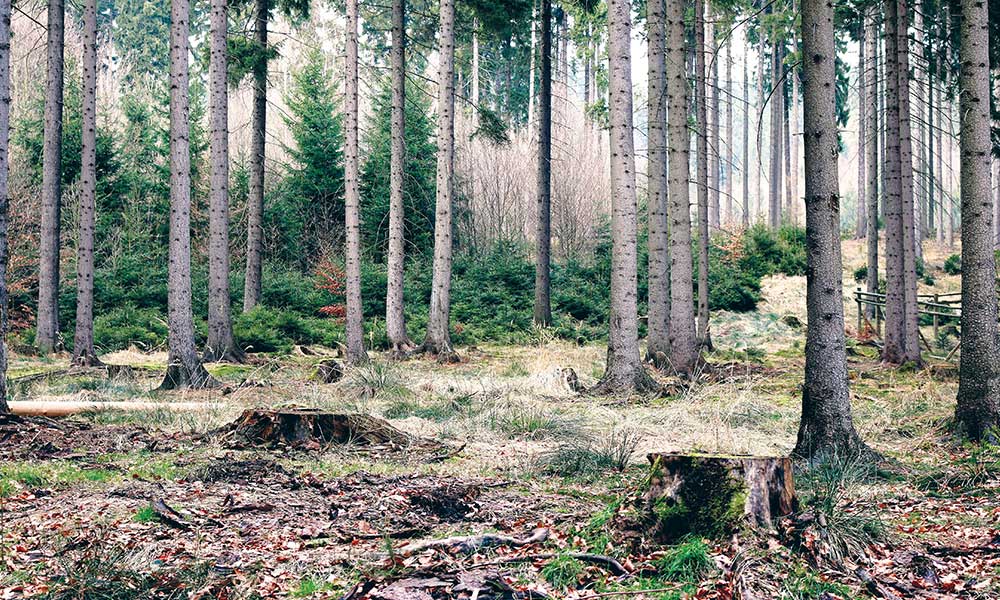Pulp Fiction: Hemp Paper vs. Wood-Based Paper

Despite the fact that we’re living in the heyday of digital media, paper consumption is actually on the upswing — in the last 20 years alone, it’s risen 126 percent. About 208 million tons of paper are used worldwide each year and many of these paper products are used once and then thrown away. In the United States, for example, around 1 billion trees worth of paper is thrown out every year.
You’re probably wondering: Could there be a more environmentally friendly way of making paper? It turns out there is — paper made from hemp. While hemp paper isn’t particularly common, it also isn’t new. Hemp paper was widely used in early American history. Unfortunately, legal restrictions on hemp cultivation have pushed the paper industry into relying mostly on wood. Still, hemp activists aren’t letting this issue rest. They continue to point out the many ways that hemp paper could help shift our environmental crisis into a sustainable future.
Here are five reasons for switching to hemp paper:
Hemp Is a Highly Renewable Resource
One big reason to switch to hemp is that it is a highly renewable source of paper. While trees are also renewable, it takes 20 to 80 years to replace a tree that has been cut down. Hemp crops, on the other hand, can be replenished and harvested in only 4 months. This means producing more paper for the amount of land being used and saving more of our precious forests.
Hemp Doesn’t Need Toxic Bleach
Another big difference with hemp paper, as opposed to paper sourced from trees, is in the way hemp is processed. Wood paper requires toxic bleaching chemicals, such as chlorine or dioxins, to whiten the paper. These chemicals from paper mills can actually poison the waterways. Hemp on the other hand, can be whitened with hydrogen peroxide, which doesn’t pose the same environmental risks.
Hemp Heals the Soil
Hemp can also help by improving the soil it is grown in. One way it does this is through phytoremediation, which is when the plant pulls toxic substances out of the soil through its roots. In fact, hemp is so well suited for this that it has been used near Chernobyl to clean up radioactive contaminants from the famous nuclear explosion. In Italy, hemp has also been used to clean up dioxins in the soil (ironically, the same toxic chemical that is used in bleaching wood for paper).
Hemp Is Stronger & Lasts Longer
Hemp also creates much stronger and more durable paper than typical paper. Paper from wood quickly decomposes and yellows. On the other hand, hemp is one of the strongest natural fibers in the world. It doesn’t yellow and resists decomposition with age. For longer-use paper like books and artwork, hemp can’t be beat.
Hemp Can Be Recycled More Times
When it comes to paper waste, recycling can make a big difference. Wood-based paper can only be recycled three times before it is unusable, while hemp paper can be recycled seven to eight times.
But despite these points in favor of hemp paper, there are still barriers to switching to hemp. Legal restrictions make it difficult for farmers to grow hemp and the technology for processing it isn’t as advanced as for wood paper. In fact, there are only 23 paper mills in the world that are equipped to use hemp. This means hemp paper is more expensive and harder to find, but with more demand, this could change. There are hemp versions of most paper products, from printer paper to packaging. There are even hemp rolling papers. When buying paper products, ask about potential options made from hemp. It’s a small step that could make big changes.
420 Intel is Your Source for Marijuana News
420 Intel Canada is your leading news source for the Canadian cannabis industry. Get the latest updates on Canadian cannabis stocks and developments on how Canada continues to be a major player in the worldwide recreational and medical cannabis industry.
420 Intel Canada is the Canadian Industry news outlet that will keep you updated on how these Canadian developments in recreational and medical marijuana will impact the country and the world. Our commitment is to bring you the most important cannabis news stories from across Canada every day of the week.
Marijuana industry news is a constant endeavor with new developments each day. For marijuana news across the True North, 420 Intel Canada promises to bring you quality, Canadian, cannabis industry news.
You can get 420 Intel news delivered directly to your inbox by signing up for our daily marijuana news, ensuring you’re always kept up to date on the ever-changing cannabis industry. To stay even better informed about marijuana legalization news follow us on Twitter, Facebook and LinkedIn.




